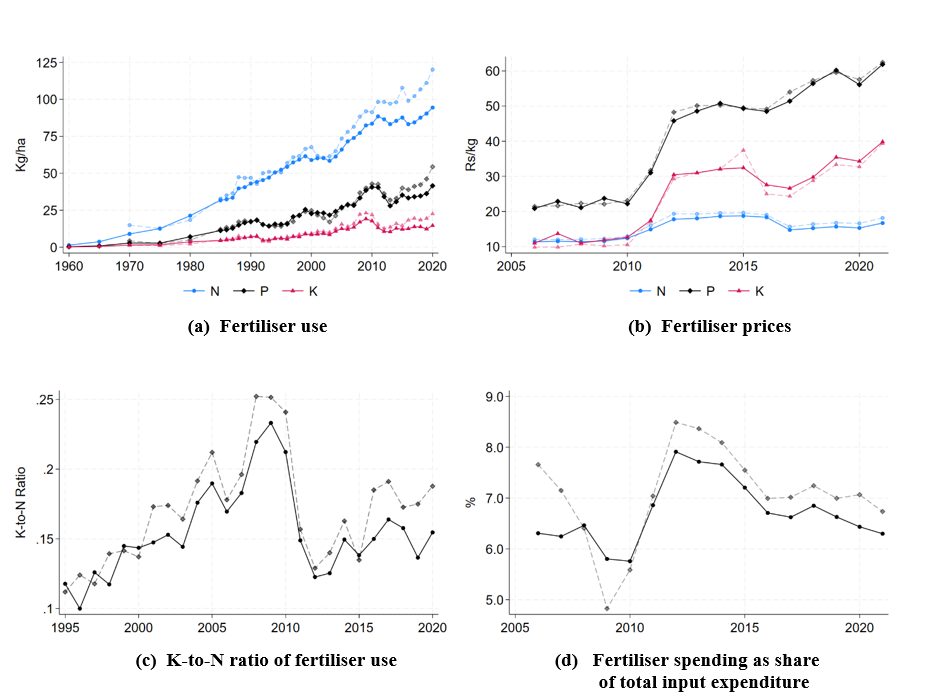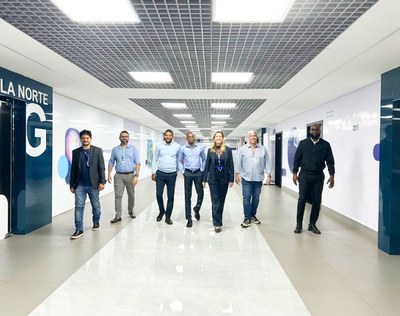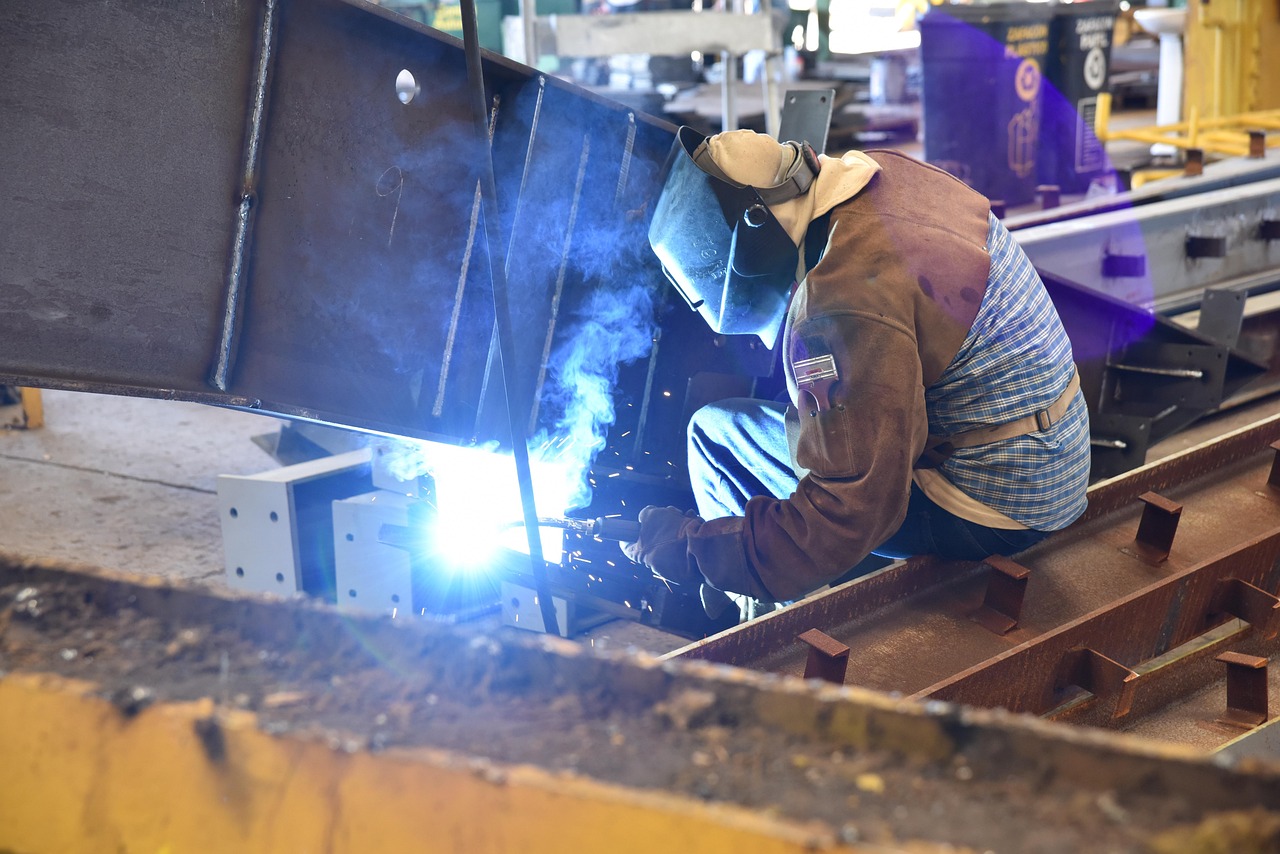An Expansion of Training Will Help American Workers Meet the Manufacturing Moment – Alliance for American Manufacturing

Report on Aligning U.S. Manufacturing Workforce Development with Sustainable Development Goals
Executive Summary
An analysis of the United States manufacturing sector reveals that employment gaps are primarily attributable to a deficit in targeted workforce training pipelines rather than a lack of public interest. This challenge presents a significant opportunity to advance several United Nations Sustainable Development Goals (SDGs), particularly SDG 4 (Quality Education), SDG 8 (Decent Work and Economic Growth), and SDG 9 (Industry, Innovation, and Infrastructure). By investing in and expanding apprenticeship and vocational education programs, the U.S. can cultivate a skilled workforce, foster sustainable industrialization, and ensure inclusive economic growth.
Re-evaluating Manufacturing Labor Demand in the Context of SDG 8
A prevalent misconception is that a lack of interest is the root cause of open manufacturing positions. However, data indicates a substantial, untapped pool of potential workers whose interest is not being met with accessible career pathways. This directly impacts the achievement of SDG 8, which aims for full, productive employment and decent work for all.
- Public Interest vs. Employment Reality: A Cato Institute poll, while sometimes cited to suggest disinterest, reveals that 25% of respondents would consider themselves “better off” in a manufacturing career. Alliance for American Manufacturing President Scott Paul notes this figure signifies a potential workforce of over 36 million people.
- Historical Context: In 1979, the manufacturing sector employed 22% of the U.S. workforce. Today, that figure is approximately 8%. The gap between the 25% interest level and the 8% employment rate underscores a systemic failure in workforce development, not a lack of demand from job seekers.
- Modern Manufacturing and Decent Work: Contrary to outdated perceptions, modern manufacturing offers dynamic and skilled careers. As noted by Charles Crane of the National Association of Manufacturers, today’s roles involve innovation, modern technologies, and safe work environments, aligning with the principles of decent work outlined in SDG 8.
The Central Role of Vocational Training in Achieving SDG 4 and SDG 9
The solution to bridging the manufacturing employment gap lies in robust educational frameworks that provide relevant technical and vocational skills, a core target of SDG 4 (Quality Education). These programs are essential for building the human capital required for a modern, innovative industrial sector as envisioned in SDG 9 (Industry, Innovation, and Infrastructure).
- Shifting Educational Paradigms: A “college or bust” mindset must be broadened to include vocational training and apprenticeships as viable, valuable pathways to skilled, high-paying careers.
- Fostering Innovation: Modern factory work increasingly involves sophisticated tasks such as programming, installing, and servicing automated systems. Training in these areas directly supports SDG 9 by enhancing the technological capabilities of the industrial sector.
- Creating a Sustainable Talent Pipeline: Investment in these educational programs creates a direct pipeline of skilled workers, ensuring the long-term sustainability and competitiveness of the domestic manufacturing base.
Case Studies: Successful Models for Sustainable Workforce Development
Successful programs across the country demonstrate the efficacy of investing in vocational training and apprenticeships, providing clear models for achieving interconnected SDG targets.
Case Study 1: Elkhart, Indiana
- Program: A high school apprenticeship program offering vocational training in manufacturing and other careers.
- SDG Impact:
- SDG 4: Provides students with relevant vocational skills for employment.
- SDG 8: Creates a direct pathway to decent, high-paying work. An employee starting in high school can earn up to $50 an hour within five years.
- SDG 9: Supplies local manufacturers, such as Hoosier Crane Service Co., with a skilled, reliable workforce, strengthening local industry.
Case Study 2: Texas State Technical College (TSTC)
- Program: Vocational education focused on modern manufacturing skills, including working with automated systems.
- SDG Impact:
- SDG 4: Meets high student demand for technical education, although capacity is currently a limiting factor.
- SDG 8 & 9: The growth of these programs has coincided with significant industrial growth in central Texas, with hundreds of new factories being built. Graduates have ample opportunities for high-paying jobs, fostering both economic growth and sustainable industrialization.
Conclusion and Recommendations
The evidence strongly indicates that a willing and motivated workforce for the manufacturing industry exists. The primary barrier to filling employment gaps is the absence of clear, accessible, and well-funded pathways for career entry. To build a resilient and innovative domestic manufacturing sector in alignment with global sustainability targets, it is imperative to expand vocational training and apprenticeship programs. This strategic investment will not only meet industry demand but will also directly advance the Sustainable Development Goals by promoting quality education (SDG 4), ensuring decent work and economic growth (SDG 8), and fostering sustainable industry and innovation (SDG 9).
Identified Sustainable Development Goals (SDGs)
SDG 4: Quality Education
- The article directly addresses the need for quality education by highlighting the “lack of education available for those interested in pursuing” manufacturing careers. It advocates for investment in “apprenticeship and vocational educational programs” as a solution. This aligns with SDG 4’s goal of ensuring inclusive and equitable quality education and promoting lifelong learning opportunities.
SDG 8: Decent Work and Economic Growth
- The core theme of the article is creating and filling jobs in the manufacturing sector to boost the domestic economy. It discusses the existence of “open manufacturing jobs,” the potential for a larger “pool of more than 36 million manufacturing workers,” and the creation of “good paying jobs,” with examples of earning potential up to “$50 an hour.” This connects directly to SDG 8’s aim to promote sustained, inclusive, and sustainable economic growth, full and productive employment, and decent work for all.
SDG 9: Industry, Innovation, and Infrastructure
- The article is centered on the effort to “grow manufacturing in the United States.” It discusses the evolution of the industry, noting that modern factory work involves innovation, working with “modern technologies,” and automation. The text mentions that “hundreds of factories being built in central Texas” is a result of a growing skilled workforce. This supports SDG 9’s goal to build resilient infrastructure, promote inclusive and sustainable industrialization, and foster innovation.
Specific SDG Targets
Targets for SDG 4: Quality Education
- Target 4.3: By 2030, ensure equal access for all women and men to affordable and quality technical, vocational and tertiary education, including university.
- The article champions this target by repeatedly calling for the expansion of “vocational training and apprenticeship programs,” citing successful examples at Texas State Technical College and in Elkhart, Indiana, which provide alternatives to a traditional “college or bust” mindset.
- Target 4.4: By 2030, substantially increase the number of youth and adults who have relevant skills, including technical and vocational skills, for employment, decent jobs and entrepreneurship.
- The article’s central argument is that the reason for open manufacturing jobs is a lack of trained workers, not a lack of interest. It argues for “rapidly expanding training pipelines” to provide people with the necessary skills for modern manufacturing careers, such as “manipulating, programming, installing and servicing the operations.”
Targets for SDG 8: Decent Work and Economic Growth
- Target 8.5: By 2030, achieve full and productive employment and decent work for all women and men…and equal pay for work of equal value.
- The article addresses this by focusing on filling “open manufacturing jobs” and creating pathways to “good paying jobs.” The example of the Elkhart apprenticeship program, where an employee can “expect to earn up to $50 an hour,” directly relates to the concept of decent work and valuable employment.
- Target 8.6: By 2030, substantially reduce the proportion of youth not in employment, education or training (NEET).
- The article highlights a successful apprenticeship program in Elkhart, Indiana, that “offers vocational training in various careers to high school students.” This program serves as a direct “pathway…into a good paying job,” thus reducing the number of young people who are not in employment, education, or training.
Targets for SDG 9: Industry, Innovation, and Infrastructure
- Target 9.2: Promote inclusive and sustainable industrialization and, by 2030, significantly raise industry’s share of employment and gross domestic product…
- The article explicitly supports this target by advocating for efforts to “grow manufacturing in the United States.” It contrasts the current 8% of the workforce in factory jobs with the 22% at its peak in 1979, implying a goal to increase industry’s share of employment. The growth of factories in Texas is cited as a positive outcome of investing in a skilled workforce.
Implied or Mentioned Indicators
Indicators for SDG 4 Targets
- Participation rate of youth and adults in formal and non-formal education and training: The article implies this indicator by discussing the high demand for vocational programs, noting that at Texas State Technical College, “the only thing preventing more students enrolling in these vocational programs is that there aren’t enough seats for everyone.” The success of the Elkhart program for high school students also points to this metric.
Indicators for SDG 8 Targets
- Proportion of youth (aged 15-24 years) not in employment, education or training: The article directly references an indicator for this by describing the Elkhart apprenticeship program, which enrolls high school students and has successfully placed employees, with “10% of their staff” at one company coming from the program.
- Average hourly earnings: The article provides a specific data point for this indicator, stating that an apprentice starting in high school “can expect to earn up to $50 an hour” after five years with the company.
- Unemployment rate / Number of open jobs: The article’s premise is built on the existence of “open manufacturing jobs,” which it uses as a key indicator of a skills gap rather than a lack of interest in the sector.
Indicators for SDG 9 Targets
- Manufacturing employment as a proportion of total employment: The article provides precise figures for this indicator, stating that factory jobs have “shrunk to 8%” of the workforce from a peak of “22% of the workforce” in 1979. The goal is to increase this proportion.
- Growth in the number of industrial facilities: This is implied by the statement that “hundreds of factories being built in central Texas in the last 15 years” corresponds with the growth in vocational training.
Summary of Findings
| SDGs | Targets | Indicators |
|---|---|---|
| SDG 4: Quality Education |
|
|
| SDG 8: Decent Work and Economic Growth |
|
|
| SDG 9: Industry, Innovation, and Infrastructure |
|
|
Source: americanmanufacturing.org

What is Your Reaction?
 Like
0
Like
0
 Dislike
0
Dislike
0
 Love
0
Love
0
 Funny
0
Funny
0
 Angry
0
Angry
0
 Sad
0
Sad
0
 Wow
0
Wow
0













![Architects use comics and humour to rethink sustainable cities [Interview] – Mongabay-India](https://imgs.mongabay.com/wp-content/uploads/sites/30/2025/11/06135611/1761635108000-768x511.jpeg?#)























































;Resize=620#)










